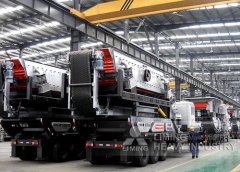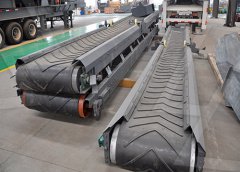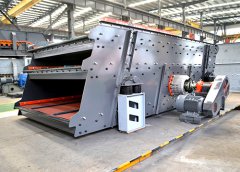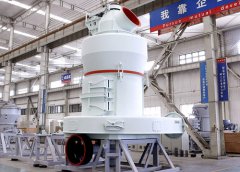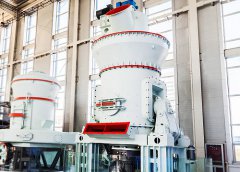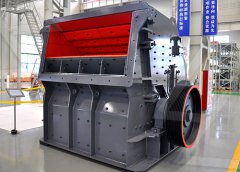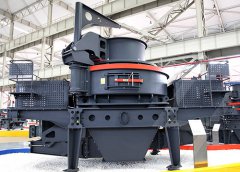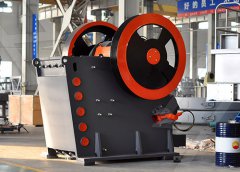
(PDF) Grinding Characteristics of Wheat in
PDF On Jan 16, 2013, Gheorghe Voicu and others published Grinding Characteristics of Wheat in Industrial Mills Find, read and cite all the An industrial wheat mill has several technological phases, starting with coarse grinding of seeds to fine grinding of the resulted Grinding Characteristics of Wheat in Industrial
احصل على السعر
Grinding Characteristics of Wheat in Industrial Semantic
Grinding of cereal seeds is due to the mechanical action of several forces: compression, shearing, crushing, cutting, friction and collision, to which seeds are subjected, To transform wheat into high-quality flour, you need to clean and condition the grain, then separate endosperm from bran and wheat germ. We offer milling machines including Wheat Milling Grain Processing LM Group
احصل على السعر
Grinding Characteristics of Wheat in Industrial Mills
Grinding of cereal seeds is due to the mechanical action of several forces: compression, shearing, crushing, cutting, friction and collision, to which seeds are The Industrial Revolution concurred with rapid technological advancements, which transformed milling into the current-day faster, less labor-intensive and more efficient and Wheat milling across history altered sugar ScienceDirect
احصل على السعر
Ultrafine grinding of wheat flour: Effect of flour/starch
In order to process wheat grains, industry processes fre-quently employ different grinding techniques. During the wheat milling process, the endosperm (source It introduces the themes of wheat hardness, bread quality and the international grain trade that brought about modern flour milling. The grinding of wheat Chapter 7 Roller Milling of Wheat ScienceDirect
احصل على السعر
A compendium of wheat germ: Separation, stabilization and
Wheat germ is valuable by product of the milling industry. • Wheat germ separation is a crucial step for its valorization. Primary processing of wheat: single Grinding (milling) of cereal grains is the fundamental operation currently used to produce flour, which is an ingredient in many food products (Liu, He, Wang, & Stone milling versus roller milling: A systematic review of the
احصل على السعر
Grinding for food powder production ScienceDirect
Introduction. Grinding is a unit operation widely used in the food industry and designed to reduce the size of materials to give a usable form or to separate their components. In developing countries, it is the common method for food powder processing. In general, grinding is part of a larger set of operations involved in the process of sizeIn order to process wheat grains, industry processes frequently employ different grinding techniques. During the wheat milling process, the endosperm (source of starch and proteins) is separated from the wheat kernel in order to obtain wheat flour with fine particle composition that can be used in many different processes.Ultrafine grinding of wheat flour: Effect of flour/starch
احصل على السعر
Ultrafine grinding of wheat flour: Effect of flour/starch
In order to process wheat grains, industry processes frequently employ different grinding techniques. During the wheat milling process, the endosperm (source of starch and proteins) is separated from the wheat kernel in order to obtain wheat flour with fine particle composition that can be used in many different processes.The global wheat production in 2001 approached 600 million tons (FAO, 2003). A minor, but industrially very important and growing use of wheat is as a source of gluten and starch. This is related to the widespread industrial and food applications of wheat gluten and starch and its derivatives.Fractionation of wheat and wheat flour into starch and gluten: overview
احصل على السعر
Stone milling versus roller milling: A systematic review of the
Wheat AND (“stone milling” OR “stone grinding”)-Wheat AND (“roller milling” OR “roller grinding”) No language, time, or publication status restrictions were imposed, and duplicates were excluded. Nowadays, many industrial mills include debranning in aestivum and durum milling, as it increases capacity, enhances yield (DeEarly humanity used pestles and mortars to grind wheat, pounding it to make a crude wholemeal flour. This basic milling technique developed into saddle rubbing stones and eventually to rotary grinding stones (querns), with evidence for use of the latter dating back 7500 years. The milling industry around the world has to maintain theWheat Milling and Flour Testing SpringerLink
احصل على السعر
Roller Mills Milling LM Group
Gupfenstrasse 5. Uzwil. 9240. Switzerland. LM roller mills consistently and safely grind wheat, corn, rye, barley, spelt and other grains. We offer a wide range of roller mills and optional functions.09.14.2021. By Arvin Donley. It’s been said the first flour miller was the first person who chewed on a wheat kernel. While the details of that milestone will never be known, we do know the transition to using millstones instead of molars to extract flour occurred around 6000 BC, and it remained the primary flour-making method for many centuries.The past, present and future of milling World
احصل على السعر
Stone milling versus roller milling: A systematic
Background. Grain milling might be the oldest manufacturing process in the world, and many techniques are currently used in the food industry. The two predominant methods used in wheat milling are stone milling and roller milling. The selected technique significantly influences flour quality, dough rheological properties, and bread characteristics.Understanding the flour milling process begins with understanding the structure of the wheat kernel. Figure 2 illustrates the structure of the wheat kernel, which is generally around 4–10 mm in length and consists of three major parts: the germ, the endosperm and the bran [16], [17], [18].The germ comprises around 2.5–4% of the Chapter 7 Roller Milling of Wheat ScienceDirect
احصل على السعر
Influence of wheat kernel physical properties on the pulverizing
The physical properties of wheat kernel were determined and related to pulverizing performance by correlation analysis. Nineteen samples of wheat cultivars about similar level of protein content (11.2–12.8 % w.b.) and obtained from organic farming system were used for analysis. The kernel (moisture content 10 % w.b.) was pulverized by using Thus, grist is the intermediate product obtained in the milling industry, by grinding grains by mean of roller mills with fluted surface. Fig. 2 presents the technological diagram of gristing phase of the wheat in an industrial mill with the capacity of 220 t/24 h.Grinding Characteristics of Wheat in Industrial Mills
احصل على السعر
Introduction to cereal processing and by-products
Their processing comprises an important part of the food production chain, but it is a complex procedure. The most common cereal processes include dry milling (wheat and rye), pearling (rice, oat, and barley), wet milling (corn and wheat), and malting (barley, corn, and wheat). During cereal processing, by-products that differ in their physical2.4. Milling Performance. Milling performance is the most important factor that determines the industrial value of durum wheat. The key indicators of milling quality are yields (total and semolina), ash content, and speck counts in the finished granular product. Yield is a key indicator of profit for durum mill.Impact of Quality Improvement and Milling Innovations on Durum Wheat
احصل على السعر
Indian Atta (whole wheat flour) industry: History and recent trends
India is 2nd largest producer of wheat producing 85-90 million metric tons (MMT) every year, accounting 12.05% of the total world wheat production. 40 to 45 MMT of wheat is ground to produce wholeChina Wheat Flour Mill manufacturers Select 2023 high quality Wheat Flour Mill products in best price from certified Chinese Milling, Mill Equipment suppliers, wholesalers and factory on Made-in-China 10t 20t/D Semolina Grinding Wheat Corn Maize Milling Machine Semolina Flour Mill for Maize Grinder . US$ 7200-8500 / Set. 1 Set (MOQChina Wheat Flour Mill, Wheat Flour Mill Manufacturers,
احصل على السعر
A modern, efficient milling sector World Grain
Sosland Publishing’s 2021 Grain & Milling Annual puts the total number of wheat flour mills in the United States at 160, down six from 2019. The states with the greatest number of mills are Pennsylvania with 13, California with 12 and Kansas with 11. The total US daily capacity in 2021 is 1,518,123 cwts, down 56,940 cwts from the As the principal component of bread, flour is vitally important; improving breadmaking starts with understanding the origins of flour and the role of the flour milling process. The grinding of wheat into flour is mankind’s oldest continuously practised industry (Storck and Teague, 1952, p. 5). The process of milling has developed side by sideMilling and flour quality ScienceDirect
احصل على السعر
A compendium of wheat germ: Separation, stabilization and
Wheat germ is valuable by product of the milling industry. • Wheat germ separation is a crucial step for its valorization. Primary processing of wheat: single stone-grinding (Fig. 1 a) Stone-grinding is the traditional method used for wheat grinding. It consists of rubbing the grains between two thick and heavy circular stones to produce
احصل على السعر
